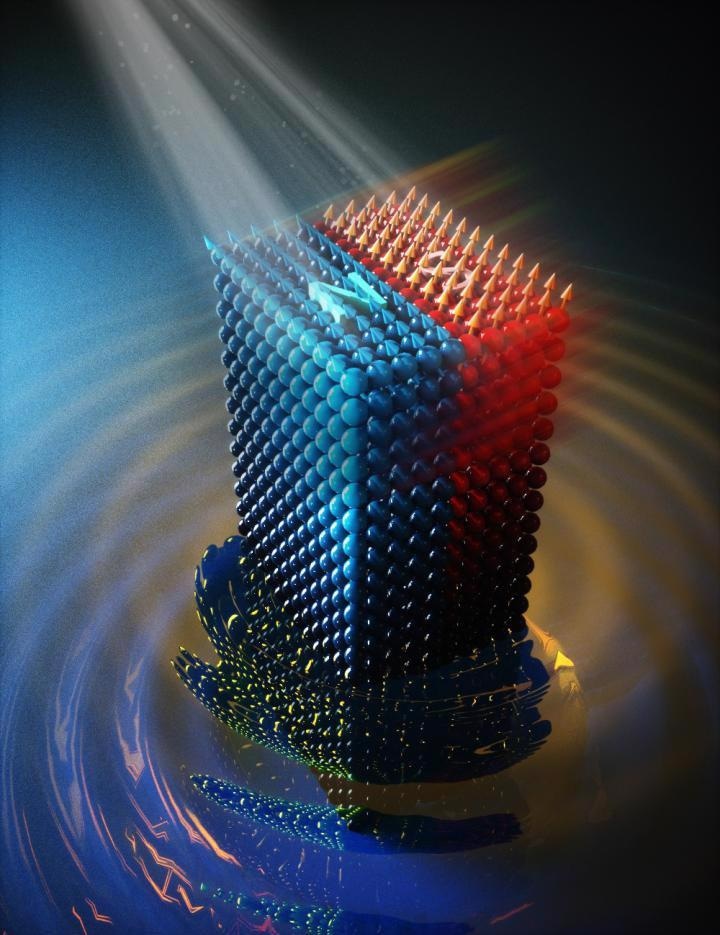Feb 15 2021
An international research team has been successful in manipulating magnets at the atomic scale following which rapid and energy-efficient future data processing technologies are on the skyline.
 The researchers used ultrashort laser pulse excitation to optically stimulate specific atomic vibrations of the magnet’s crystal lattice. Image Credit: Lancaster University.
The researchers used ultrashort laser pulse excitation to optically stimulate specific atomic vibrations of the magnet’s crystal lattice. Image Credit: Lancaster University.
With stalling efficiency trends of current technology, new scientific approaches are especially valuable. Our discovery of the atomically-driven ultrafast control of magnetism opens broad avenues for fast and energy-efficient future data processing technologies essential to keep up with our data hunger.
Dr Rostislav Mikhaylovskiy, Physicist, Lancaster University
In modern life, magnetic materials are used more and more with applications that range from fridge magnets to Google and Amazon’s data centers for storing digital data.
Such materials consist of trillions of elementary magnetic moments or 'spins' that are aligned mutually. This alignment relies heavily on the atoms’ arrangement in the crystal lattice.
The spin can be visualized as an elementary 'needle of a compass,' usually denoted as an arrow indicating the direction from North to South poles. All the spins in magnets are aligned along the same direction by the force known as an exchange interaction.
The exchange interaction is one of the powerful quantum effects liable for the presence of magnetic materials.
The constantly increasing demand for efficient magnetic data processing requires innovative means to control the magnetic state, and controlling the exchange interaction would be the most effective and eventually quickest method to regulate magnetism.
To achieve this outcome, the team made use of the strongest and quickest stimulus available: ultrashort laser pulse excitation. Light was used to optically activate the particular atomic vibrations of the magnet’s crystal lattice, which widely disturbed and deformed the material’s structure.
The study findings have been published in the renowned journal Nature Materials by the international research team from Lancaster, Delft, Nijmegen, Liege and Kiev.
We optically shake the lattice of a magnet that is made up of alternating up and down small magnetic moments and therefore does not have a net magnetization, unlike the familiar fridge magnets.
Jorrit Hortensius, PhD Student, Technical University of Delft
The crystal agitated for a very short time and the team directly quantified how the magnetic properties develop in time. After the agitation, the magnetic system of the antiferromagnet gets altered, such that a net magnetization emerges: for a fraction of time, the material is similar to the daily fridge magnets.
All this happens within a record breaking short time of a very few picoseconds (millionth of a millionth of a second). This time is not just orders of magnitude shorter compared to the recording time in modern computer hard drives but also precisely corresponds to the basic limit for the magnetization switching.
It has long been thought that the control of magnetism by atomic vibrations is restricted to acoustic excitations (sound waves) and cannot be faster than nanoseconds. We have reduced the magnetic switching time by 1000 times that is a major milestone in itself.
Dr Rostislav Mikhaylovskiy, Physicist, Lancaster University
“We believe that our findings will stimulate further research into exploring and understanding the exact mechanisms governing the ultrafast lattice control of the magnetic state,” concluded Dr Dmytro Afanasiev from the Technical University of Delft.
Journal Reference
Afanasiev, D., et al. (2021) Ultrafast control of magnetic interactions via light-driven phonons. Nature Materials. doi.org/10.1038/s41563-021-00922-7.